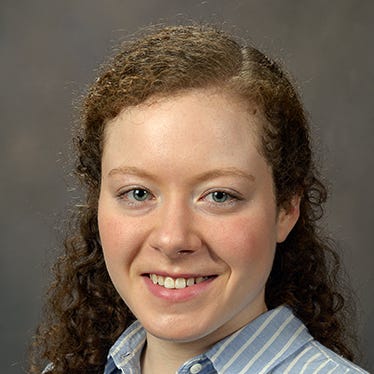January 31, 2018

An LSU AgCenter researcher is trying to find out if an aggressive pest that has devastating effects on sweet potatoes has made its way into Louisiana.
AgCenter nematologist Charles Overstreet is looking for the pacara earpod tree root-knot nematode, which was detected recently in North Carolina sweet potato fields. It originated in China and is sometimes called the guava root-knot nematode because it has been problematic in that crop in South America.
Speaking at a Louisiana Sweet Potato Association meeting near Alexandria, La., on Jan. 10, Overstreet said the only other U.S. state where the nematode has been found is Florida. He is optimistic it is not in Louisiana but said farmers should still be on the lookout for signs of infestations.
“This is considered to be the most severe root-knot nematode in the world,” Overstreet said. “It causes more damage than any other nematode when it gets onto susceptible plants.”
Nematodes, or roundworms, cause galls that hinder plant development. The guava root-knot nematode produces the largest galls Overstreet said he has ever seen, essentially turning a plant’s roots into one large, bumpy mass.
All sweet potato varieties grown in Louisiana, including those resistant to the common Southern root-knot nematode, are considered susceptible to the guava root-knot nematode. The pest also affects other vegetables as well as agronomic crops like soybeans and cotton.
Overstreet said farmers who get planting material from North Carolina, the No. 1 sweet-potato-growing state, should be especially cautious.
Some infested fields in North Carolina were complete losses. But “the good news is they are getting good results with nematicides” in most cases, Overstreet said.
Louisiana farmers who suspect they have the guava root-knot nematode can mail soil samples to Overstreet’s lab for a free analysis. He urged farmers who had more nematode damage than usual in 2017 to send samples.
More information is available at http://www.lsuagcenter.com/nas.
2017 crop
Louisiana had 9,223 acres of sweet potatoes in 2017, with most production in West Carroll, Franklin, Avoyelles and Acadia parishes, said AgCenter Extension associate Myrl Sistrunk.
Yields averaged 445 bushels per acre. Some farmers saw excellent yields, Sistrunk said, while others had poor yields due to rainy weather and an outbreak of cucumber beetles.
He said about half the state’s acreage is planted in the Beauregard variety, an industry mainstay the AgCenter released in the 1980s. Orleans and Bayou Belle, two newer AgCenter varieties, make up most of the remaining acres.
AgCenter sweet potato breeder Don La Bonte said he is evaluating a few red-skinned varieties for release, among others.
Two of those varieties, which have vibrant red skins and deep orange flesh, may offer a trait La Bonte has long been striving for: early development, which means potatoes can be sold to market sooner. Another variety he’s looking at shows good resistance to the cucumber beetle, which has been a big problem in Louisiana.
La Bonte also is evaluating a few purple-fleshed lines, which he said can be sold on the fresh market and have potential uses as natural dyes.
Fertilizer
Another project discussed at the Sweet Potato Association meeting centered on fertilizer applications. AgCenter agronomist Arthur Villordon said phosphorus — the “fuel” that allows sweet potatoes to grow — requires special attention.
“The notion that the roots will grow to find the phosphorus is not completely correct,” he said, adding that it is best to apply phosphorus before planting and to incorporate it into the soil.
It’s important to only apply what nutrients are needed, he said, so farmers should have their soil tested. Applying too much fertilizer can damage plants and create unnecessary expenses.
Also at the meeting:
Crystal Robertson, AgCenter farm to school specialist, talked about efforts to encourage school cafeterias to serve local produce such as sweet potatoes. She said the MarketMaker tool can connect farmers to schools and other buyers.
AgCenter plant pathologist Chris Clark told about scurf, an old disease that resurfaced in Louisiana in 2017. He warned farmers not to rely on fungicides alone to control scurf, saying they also should rotate crops, use clean seed and cut plants 1 inch above the soil.
Tara Smith, director of the AgCenter Northeast Region and resident coordinator of the Sweet Potato Research Station, reviewed insecticide and nematicide options.
AgCenter weed scientist Donnie Miller talked about the importance of preventing herbicide drift onto sweet potatoes as new products containing 2,4-D and dicamba come onto the market. He said as little as 1/100 of an application rate of the herbicides can cause plants to wilt, reducing yields.
The association presented Distinguished Service Awards to Mary Hoy and Bill McLemore, both AgCenter research associates who work with sweet potatoes.
AgCenter associate vice president Rogers Leonard thanked the association for helping fund research projects. “A lot of the work done by these scientists could not be done without your support,” he said.
About the Author(s)
You May Also Like






